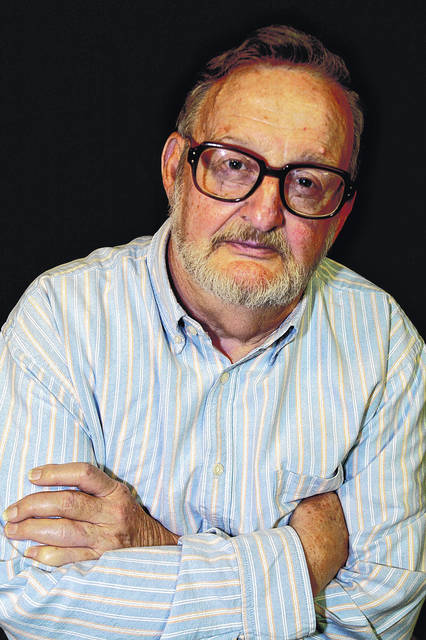It seems to me that the recent record-breaking taste of winter has brought on memories of past classic snowstorms. I suppose we all have our own recollections of blizzards and near-blizzards but the one that truly stands out for those of us who were around at the time is the Thanksgiving snowstorm of 1950. It was truly historic for several reasons. Here’s the story from a couple who experienced it.
My Sweetheart-for-Life and I were both home from college (different schools) to spend the Thanksgiving break with our families – and each other – in Marion, Ohio, a town about 45 miles north of Columbus. Thanksgiving Day was unremarkable with the usual holiday meal and activities, but the next day, Friday November 24th, the storm hit with snow, wind, and very cold weather – giving way to what has been identified as the biggest snowstorm in this state’s history.
Winds increased to over 40 mph and temperatures dropped to near zero. The storm worsened on Saturday November 25th so that by nightfall nearly the entire state had over 10 inches of snow. Most communities in the eastern half of Ohio measured 20 to 30 inches of snow with drifts of 25 feet deep requiring bulldozers being used to clear the roads for emergency vehicles – but that’s not the only reason we recollect this “weather event” so clearly.
You see, the annual classic Ohio State-Michigan football game was scheduled for Saturday afternoon in Columbus with the Big Ten championship and a trip to the Rose Bowl on the line. Ohio State, the University of Michigan, and officials from the Big Ten considered canceling the game because of the extreme conditions, these entities decided to play the game. The reason? If the game had been canceled, Ohio State would have won the Big Ten title by default. So with a Saturday morning temperature of 5 degrees and winds of 40 mph (a wind chill factor of about -30F) what became known as the “Snow Bowl” was played in Columbus with more than fifty thousand in attendance at the game – talk about fans!
Five inches of snow had already fallen before the kickoff, and more snow fell during the game. Almost all plays were runs as players slipped and fell on the field, unable to gain their footing. Both teams usually punted after two downs, in case the punter fumbled the ball due to the cold. That way, if the offense recovered the fumble, it would have fourth down to attempt to punt again.
Workers had to repeatedly sweep the lines on the field so that the game could continue. Would you believe Vic Janowicz, the Ohio State legendary “triple-threat”All-American, punted twenty-one times for 685 yards – and also kicked a field goal for the only Ohio State points. Michigan forced a safety for two points and recovered a blocked Janowicz punt for a touchdown. The travesty ended with Michigan winning the game and the Big Ten championship by a score of 9-3.
Although the game was over the storm continued. The Michigan team left Columbus by bus on its way north to Ann Arbor despite the weather. This effort came to a halt in Marion as the roads became impassible. The team found shelter at the Hotel Harding, the largest, most modern, and best hotel in Marion. According to my Mom who worked at the hotel, there was quite a scramble to provide accommodations and, likely more difficult, food for this large contingent of unanticipated guests but somehow everything worked out. Yep, although the Michigan team had denied Ohio State a trip to the Rose Bowl, they were treated as honored guests seeking shelter in a storm.
The storm finally subsided, the roads were cleared, the Michigan football team resumed their journey, our colleges reopened, we went back to school, and folks’ normal winter lives continued. Big Ten football champion Michigan went onto the 1951 Rose Bowl and defeated the California Golden Bears, champions of the Pacific Coast Conference, by a score of 14-6.
Well, that momentous snowstorm of Thanksgiving 1950 has now passed into the dusty annals of history as has the celebrated “Snow Bowl” but for those of us who lived through that unforgettable weekend these events will always be stored in our memories just waiting to be resurrected. At least that’s how it seems to me. (Bill Taylor is a regular Greene County Daily contributing columnist and local area resident.)





